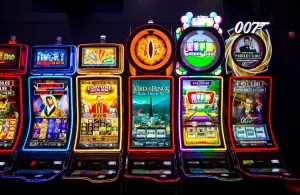
Understanding how fast-changing outcomes move during active sessions requires calm focus. Many players seek stable progress but face quick shifts in results. Managing these shifts demands awareness and steady pacing over every move. Applying simple patterns helps reduce stress during extended participation. The company of BTV168 in conversation often highlights how players track balances.
Maintaining stable decision flow
A steady mindset keeps focus during rapid sequences. Clear tracking helps reduce confusion.
Balancing outcome expectations
Players learn to accept varying results naturally. Reduced pressure limits emotional response.
Risk pace movement understanding
Players note how quickly changes from repeating rhythm. Recognizing this rhythm supports timely adjustment.
- Careful notes help detect subtle movement changes early during the active phase
- Calm judgment encourages safe action through uncertain rounds
- Clear limits prevent unnecessary strain on remaining resources
- Patience reduces sudden reactions during losing shifts
- Observing patterns forms a practical understanding of rhythm trends
Outcome shift reading method
Observing fluctuations reveals when conditions alter quickly. Short breaks support clarity.
- Short pauses restore clarity between outcome transitions
- Gradual pacing protects from rushed decisions during tension
- Balance review helps maintain consistent flow awareness
- Focused breathing steady’s attention during pressure points
- Simple action steps avoid overwhelming decision complexity
Resource Hold Planning Guide
Stable control relies on monitoring remaining value. Organized planning prevents imbalance.
- Pre-planned ranges support structured participation intervals
- Small step methods prevent abrupt resource decline
- Regular review ensures a healthy balance across time
- Controlled pace maintains moderate engagement rhythm
- Simple caps prevent extending beyond prepared limits
Emotional reaction soft control
Emotions shape how choices form during sessions. Reducing reaction intensity strengthens clarity.
- Gentle self-reminders reduce rising frustration
- Observing feelings helps prevent sudden shifts in approach
- Minor slowdowns reset perspective during stress points
- Calm breathing restores a steady decision pace
- Reflective posture encourages controlled response
FAQ Section
What supports a consistent participation rhythm?
Stable rhythm forms through simple routines. Tracking assists in recognizing shift timing. Gradual pacing enhances control.
| Aspect | Purpose | Result |
| Pacing | Maintains steady approach | Reduces rushed choices |
| Notation | Tracks flow patterns | Improves timing awareness |
| Breaks | Resets mental clarity | Prevents emotional reaction |
| Limits | Controls resource usage | Maintains sustainable session length |
Maintaining awareness during extended participation helps protect stable engagement. Regular reflection supports controlled pacing.
Steady Closing View
Players often deal with changing outcomes, so balanced awareness encourages structured pacing. Calm observation supports stronger decision flow over time. Gentle planning helps control session length while protecting valuable progress. Light review strengthens learning for future participation. The influence of BTV168 shows how organized reference points guide consistent movement.






